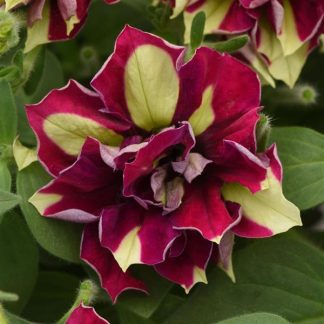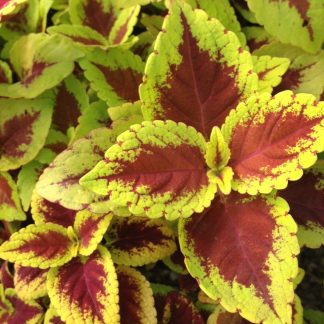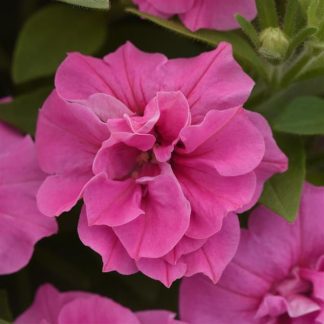Description
AngelMist Spreading White Angelonia
A gentle, wide-armed wave of pure white blooms
Welcome to the World of AngelMist Spreading White
AngelMist Spreading White is a newer variety of Angelonia angustifolia, also known as summer snapdragon. You may have seen pink, purple, or bi-color angelonias in bright planters around town, yet this all-white cultivar adds a serene glow that other colors can’t match. In other words, it’s the calm in the heat of summer. But most of all, it’s a strong, spreading plant that works hard for you while asking for very little in return.
We’re going to walk through every detail—what it looks like, how it behaves, and how you can help it thrive. Let’s dig in, together.
Part 1 – Meet the Plant
A Blanket of Snow in Summer
AngelMist Spreading White forms a tidy mound that then stretches outward, spilling gently over the edges of beds, baskets, and window boxes. Each narrow stem carries pairs of glossy leaves and a succession of small, orchid-like flowers. The blooms open pure white with a faint yellow throat. Even at a glance, the impression is soft and refreshing—like a cool towel on a scorching day.
Size and Shape
- Height: 8–12 inches
- Spread: 20–30 inches
- Habit: Low, arching, and spreading rather than upright
The plant’s “spreading” name is no exaggeration. While traditional angelonias rise vertically, AngelMist sweeps sideways, filling gaps without smothering neighbors.
A Flower Factory
Angelonia blooms on new growth. Because it never stops pushing fresh stems, it never stops flowering until frost. You’ll see sprays of blossoms beginning in late spring and peaking in midsummer when temperatures are high.
Gentle Fragrance
Brush the foliage and you may catch a light fruity scent—some say it hints at apples, others say grape bubble gum. Either way, butterflies and bees notice, too. The white petals reflect moonlight, so you may spot moths sipping after dusk.
Part 2 – Why We Love AngelMist Spreading White
| Superpower | What It Means for You |
|---|---|
| Heat and Humidity Tolerance | Keeps flowering through the muggiest afternoons. No wilting theatrics. |
| Self-Cleaning | Spent blooms dry up and drop without deadheading. |
| Drought Resistance | Miss a watering? AngelMist forgives you, thanks to thick leaves that seal in moisture. |
| Disease Resilience | Good airflow and natural essential oils fight mildew and fungus. |
| Pollinator Magnet | Lacewings, native bees, and small butterflies visit daily. |
Instead of fussy maintenance, you get steady performance. After more than a few summers of testing, growers rank AngelMist at the very top for summer staying power.
Part 3 – Light Requirements
- Sun Needs: 6–8 hours of direct light each day
- Partial Shade: Acceptable in the hottest zones, though blooming may slow slightly
- Indoor Potential: Bright south-facing sunroom windows can keep it flowering year-round
Think of it this way: more sun equals more white petals. Place containers where the sunrise and sunset both kiss the leaves.
Part 4 – Soil and Planting
Soil Mix
| Ingredient | Purpose |
|---|---|
| Two parts quality potting mix | Lightweight anchor for roots |
| One part compost | Slow nutrient release |
| A handful of perlite | Extra drainage |
pH can range from 5.5 to 6.5—slightly acidic to neutral. The key is drainage. Soggy soil is the enemy.
Bed Spacing
Plant 12–14 inches apart in beds. They’ll grow together, weaving a seamless carpet by midsummer. If you’re working with a long border, plant in drifts of five or seven for the boldest sweep of white.
Container Recipes
- Hanging Basket (12 inches): 3 AngelMist Spreading White around the rim, trailing outwards
- Window Box (24 inches): 4 AngelMist spaced evenly, underplanted with silver licorice for soft contrast
- Patio Pot (14 inches): 1 AngelMist center, ringed with chartreuse sweet potato vine
The white flowers act like string lights, brightening companion foliage of every shade.
Part 5 – Watering Wisdom
AngelMist likes to dry a bit between drinks.
- Check Moisture: Stick your finger one inch deep.
- If Dry: Water thoroughly until liquid escapes the drainage holes.
- If Damp: Wait a day.
During peak summer sun, container plants may need daily water. Beds usually hold two or three days of moisture. Early morning watering sets plants up for the day while keeping leaves dry overnight.
Part 6 – Feeding for Continuous Bloom
- After Planting: Mix in a slow-release, balanced fertilizer (e.g., 14-14-14).
- Midseason Boost: Every four weeks, water with half-strength liquid bloom food (e.g., 10-30-20).
- Organic Option: Top-dress with worm castings and compost tea.
AngelMist is not a heavy feeder, yet it rewards gentle, steady nutrition. Picture it as a runner sipping an electrolyte drink—never gulping, never dehydrated.
Part 7 – Pruning and Grooming
One of the joys of AngelMist Spreading White is that you don’t need to deadhead. Still, a little grooming helps:
- Pinch Back: When stems reach 8 inches, pinch the tips. This triggers more branches.
- Refresh Mid-Summer: Shear the whole plant by one-third. New growth will be lush and flower-packed within two weeks.
- Remove Broken Stems: After heavy rain or pets romping through, tidy as needed.
Simple, quick, done.
Part 8 – Pests and Problems
| Issue | Sign | Easy Fix |
|---|---|---|
| Aphids | Sticky leaves, tiny green insects | Blast with water, then apply insecticidal soap |
| Spider mites | Fine webbing, speckled foliage | Increase humidity, spray horticultural oil |
| Root rot | Wilting despite wet soil | Improve drainage, cut back watering |
Most troubles fade fast when you focus on proper sun and airflow. Healthy, vigorous plants shake off minor pests on their own.
Part 9 – Seasonal Timeline
| Season | What Happens | Your Task |
|---|---|---|
| Early Spring | Transplants arrive at garden centers. | Harden off seedlings, plant after last frost. |
| Late Spring | Buds appear. | Apply slow-release fertilizer. |
| Summer Peak | Full bloom, heat tolerance shines. | Water deeply, shear lightly if blooms slow. |
| Early Fall | Flowers keep coming until first frost. | Enjoy! Save cuttings if you wish. |
| Winter | Outdoors, plants die back in cold zones. | Compost spent plants, or overwinter cuttings indoors under light. |
Part 10 – Propagation Pathways
You have two easy routes:
- Cuttings
- Snip 4-inch sprigs just below a node.
- Remove lower leaves; dip tips in rooting gel.
- Insert into damp perlite or seed-starting mix.
- Keep under high humidity and 72 °F warmth.
Roots appear in 10–14 days.
- Seed
Commercial growers sow pelleted seed in January. Home gardeners can sow in cell trays 10 weeks before last frost. Light aids germination, so barely cover seeds. Expect blooms in 10–12 weeks after transplanting.
Cuttings keep the exact traits of the parent. Seeds may vary slightly, though AngelMist series is usually stable.
Part 11 – Companions and Design Ideas
- Salvia ‘Mystic Spires Blue’ – deep cobalt spires stand tall above the spreading white tide
- Calibrachoa ‘Lemon Slice’ – yellow stripes sparkle beside AngelMist’s clean petals
- Coleus ‘Chocolate Covered Cherry’ – burgundy leaves and pink centers make the white pop
- Ornamental grasses – blue fescue or dwarf fountain grass offer texture and movement
- Herbs – lavender or rosemary echo the scent theme and invite more pollinators
Think of AngelMist as your neutral canvas. You paint around it with bold foliage or bright flowers, and the white still shines.
Part 12 – In the Kitchen and Beyond
Angelonia is ornamental only, so it’s not for salads. But you can:
- Float blooms in ice water pitchers for garden parties.
- Press flowers in a heavy book to craft greeting cards.
- Cut stems for miniature bouquets; they last 7–10 days in water.
- Dry blossoms for sachets; the fruity scent lingers.
Part 13 – Troubleshooting Quick-Guide
- Few Flowers?
- Add more sun.
- Feed lightly with bloom fertilizer.
- Leggy Growth?
- Pinch tips sooner.
- Shear and allow to regrow thicker.
- Yellow Leaves?
- Check drainage.
- Avoid standing water in saucers.
- Plants Crash After Heavy Rain?
- Improve drainage with raised beds or chunky mix.
- Stick to morning watering so foliage dries fast.
Every solution is small. Keep observing, and you’ll stay ahead of issues.
Part 14 – How We Garden Together
We often describe plants as “easy,” yet that word can feel empty. With AngelMist Spreading White, “easy” is real. You, me, beginners, busy parents, seasoned designers—we all get the same result: a wide, bright mat of white blooms that asks only for sun, modest water, and the occasional pinch. We share in the success. That’s gardening joy.
Part 15 – A Year of Ideas
- Spring: Mix AngelMist with pastel pansies for a cool-weather porch pot.
- Early Summer: Replace pansies with sun-loving coleus for a mid-season refresh.
- High Summer: Add sky-blue evolvulus around the base to echo summer skies.
- Fall: Frame white angelonia with ornamental kale and dusty miller for an early-frost showcase.
Rotate companions, keep the star, and your containers stay fresh for months.
Part 16 – Frequently Asked Questions
Q: Will AngelMist Spreading White survive winter outside?
A: Only in zones 10–11. In colder zones, treat it as an annual or overwinter cuttings indoors.
Q: Is it deer resistant?
A: Yes. Deer dislike the aromatic foliage and typically ignore it.
Q: Can I grow it in part shade?
A: Yes, but blooms may be fewer. Aim for at least morning sun.
Q: Does it thrive in clay soil?
A: Amend clay with compost and coarse sand to improve drainage. Consistently soggy roots cause trouble.
Q: How often should I repot?
A: AngelMist flowers best when slightly root-bound. One summer per container is fine; start fresh each spring.
Your AngelMist Journey Starts Now
You now have every practical detail to grow AngelMist Spreading White with confidence. Picture that cascading curtain of white against deep green leaves and buzzing pollinators—your own summer snowstorm that cools the eye and lifts the spirit. Grab a trowel, find the sunniest corner, and invite this hardworking beauty into your garden story.




